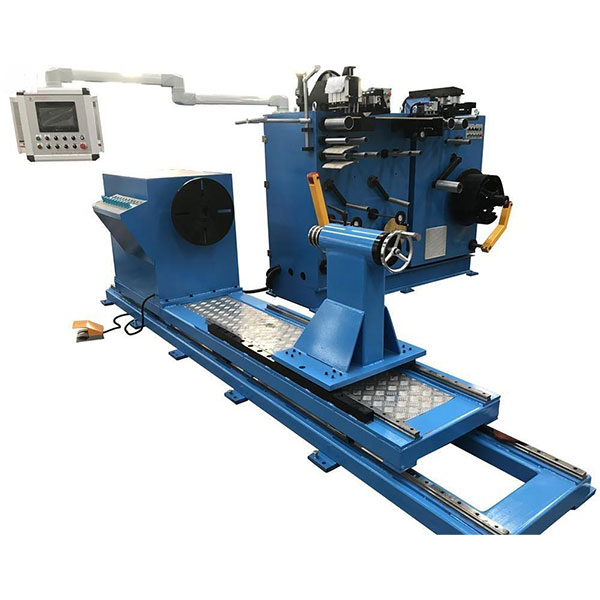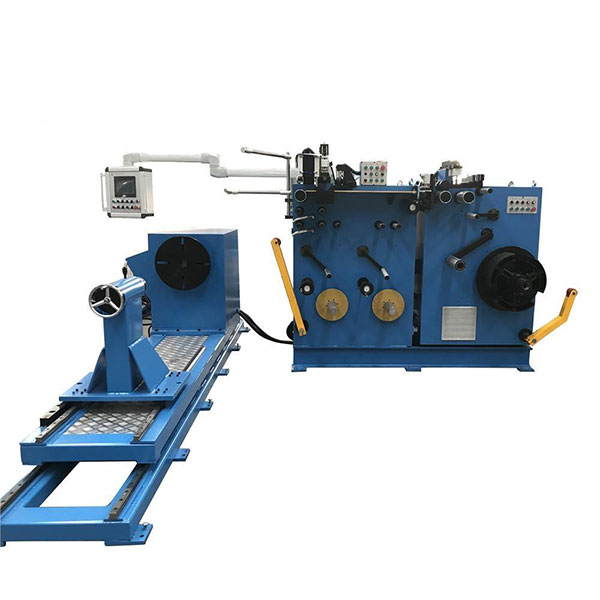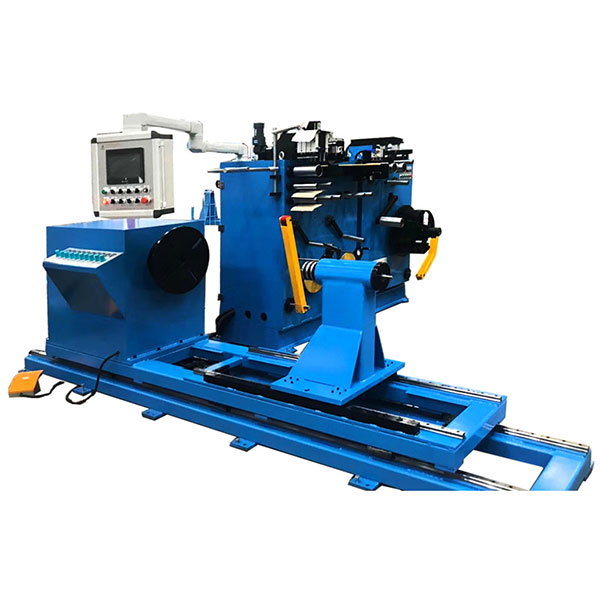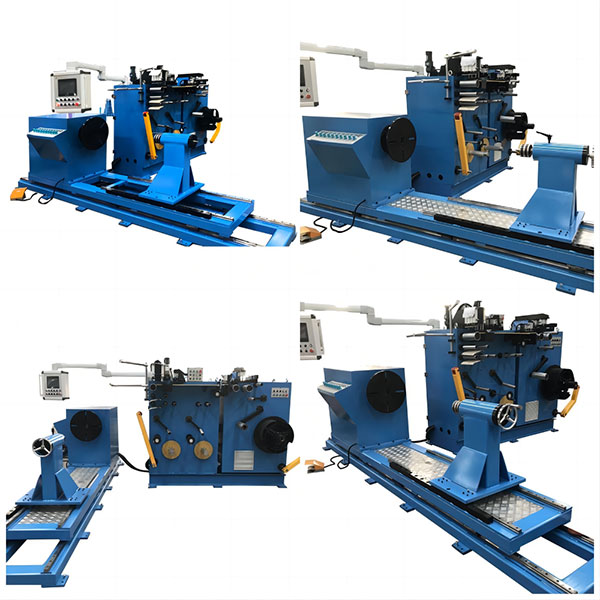This eliminates seal changes during winding. In addition, the machine is also equipped with a correction sensor device. It uses non-contact photoelectric sensors to detect any deviation on the foil edge and dynamically corrects it via a servo-driven deviation correction mechanism. The system has high precision, high responsiveness, and high reliability, and the correction accuracy is within +/-0.4mm. Foil coils are wound with copper and aluminum foils of different thicknesses as conductors, wide insulating materials as interlayer insulation, and narrow insulating materials as end insulation. The coils are formed through a single winding process on a high-voltage foil winding machine.
The machine also completes the welding of the inner and outer leads of the coil, as well as the winding of the outer surface. With its comprehensive functionality, the machine provides ample support for manufacturing foil rolls to the required specifications. It has become an essential equipment for producing parts of such electrical products. Investing in a high-voltage foil winding machine ensures efficient production processes, high-quality coil manufacturing and overall optimization of transformer production operations.
High-voltage foil winding machines
precision and efficiency in coil manufacturing High-voltage foil winding machine is a precision equipment specially designed to meet the needs of high-voltage coil production. It consists of several key components that work together to ensure precise winding and superior coil quality.
Aluminum foil uncoiler
The unwinder supports the unwinding, collection and discharge of aluminum foil strips. It has a round spindle with four links that hold four expandable blocks, allowing the drum to be supported on the loading drum via hydraulic supports. The high-power servo motor drives the spindle to accurately unwind, unload, and rewind, allowing you to adjust working conditions quickly and easily. This design ensures that the tension deviation is constant within the minimum range during the winding process. Two sets of independent damping sensing devices are integrated into the unwinding machine, which can provide a wide range of tension adjustment.
The damping device adopts pneumatic control to provide constant tension function for the servo motor, which is convenient, clean and safe to control. The entire decoiler is connected to the fuselage through large linear guide rails and is equipped with a servo correction system. Under the instruction of the PLC control system and based on the feedback of the deviation detection signal, the unwinding machine moves accurately along the guide rail to adjust the position of the foil to ensure precise positioning and deviation correction of the foil.

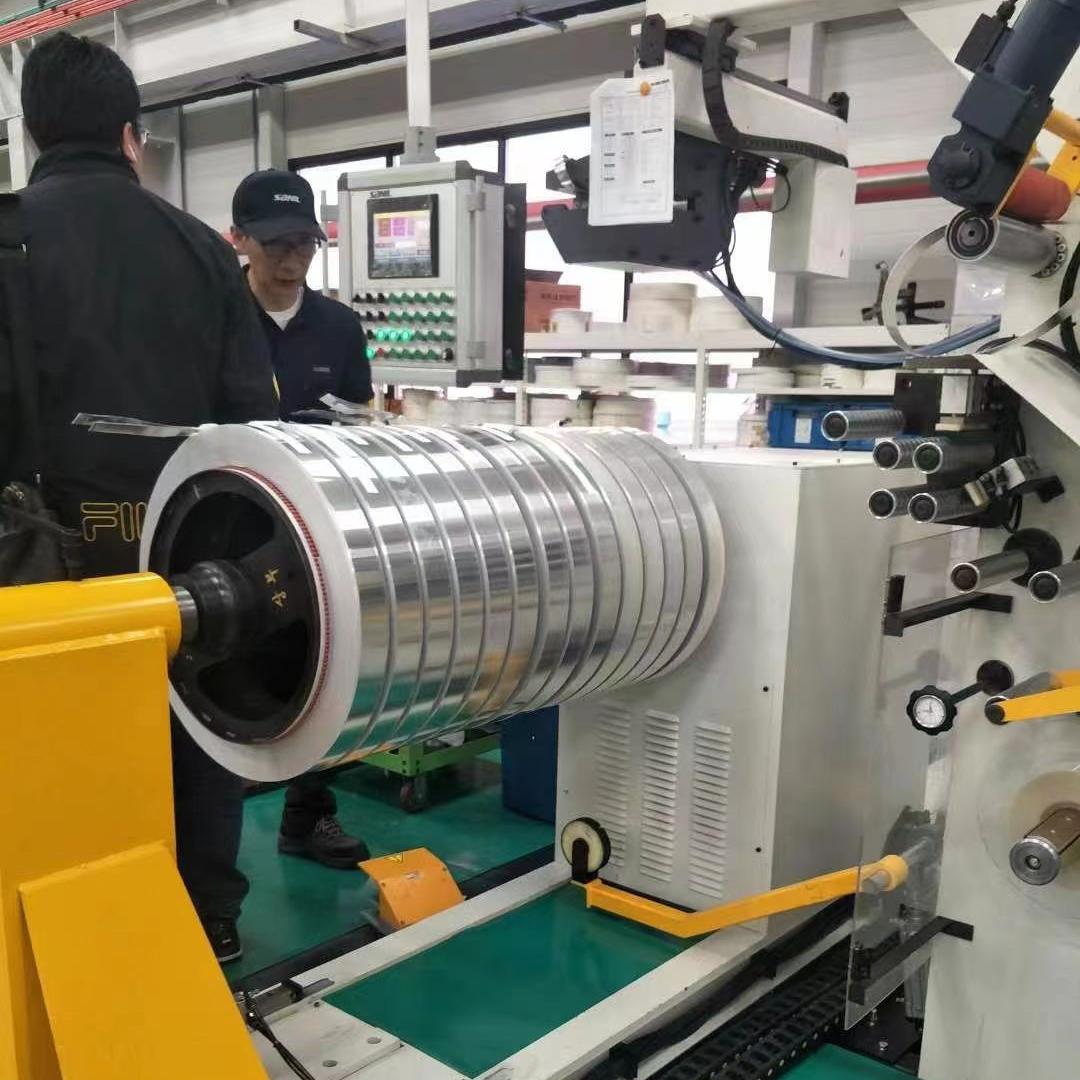
Winding system
The winding machine is located at the front end of the equipment and wraps the foil tape around the winding shaft. Prioritize mechanical strength and output torque in the design of the winding machine, taking into account the maximum size of the workpiece material and the expansion force required by the process. The outer shell of the winding machine is welded with thick steel plates and processed after annealing and stress relief treatment.
The gear system of the transmission and gearbox consists of large-module helical gears, the tooth profiles of which are hardened using grinding technology. This ensures mechanical strength at high torque output, ensuring smooth operation and low noise levels of the entire equipment.
The machine adopts variable frequency speed regulation to provide maximum torque and appropriate rotation speed at low speed. It provides sufficient torque and maximum speed to meet the requirements of different winding processes. During the spindle winding process, the start and stop acceleration slopes are appropriately set, and it has a braking function to improve operational availability. It adopts high-power drive motor and has abundant power reserve.
Left/right movement system: The left/right movement of the winding machine is achieved through a servo motor system and a precision planetary reducer.
This system ensures maximum deviation of the two sets of coils during winding and movement.
Exercise intensity can be preset via the touch screen and activated via buttons for easy operation.
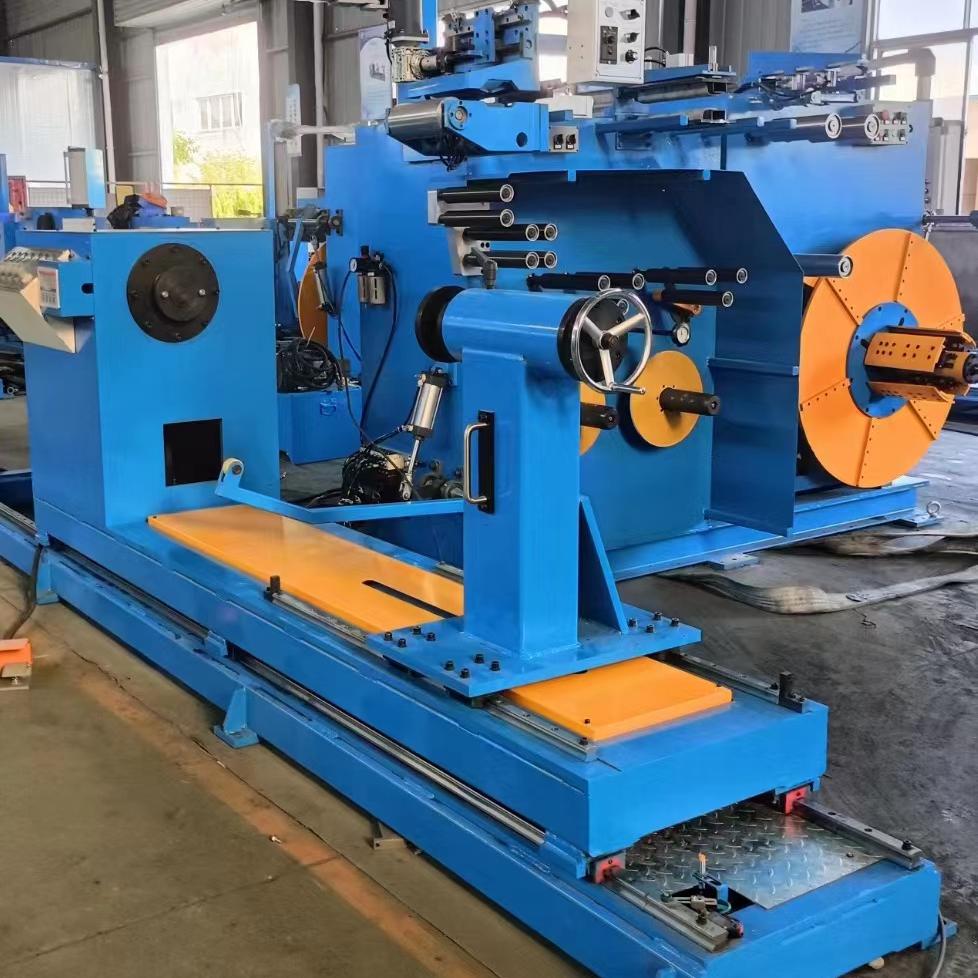

Winding system
Insulating layer device: The insulation layer unwinding device supports the winding of the insulation material and ensures its expansion during the winding process. The winding machine is equipped with two sets of insulation unwinding mechanisms, which can provide two layers of insulation paper or heat insulation film at the same time. The mechanism consists of four parts: an inflatable loading roller, a driving system, an insulation layer guide roller, and a damping device. By pressing the air valve at the end of the inflatable drum, the rubber expansion block retracts, allowing the material to be inserted directly into the drum. Use an air gun to release the rubber expansion block through the air valve to fix and inflate the insulated coil and maintain the required expansion state during the winding process. The tension can be adjusted conveniently and arbitrarily through the guide roller and damping roller. The power system of the insulation unwinding device adopts a precision servo motor and has a wide tension adjustment range. The power of the damping device is controlled by pneumatic induction, which sends instructions to the servo motor to realize the constant tension function. This design ensures easy control, cleaning, safety and reversible rotation for increased convenience.
Deburring device
This deburring device effectively removes burrs from foil tapes by controlling the air pressure exerted on two sets of precision rollers. This process not only removes burrs smoothly, but also provides a versatile oscillating motion to the frame that holds the precision rollers. This can be adjusted according to the thickness, width and randomness of the tape, effectively reducing burrs on the edges of the aluminum foil tape. The air pressure can also be randomly adjusted according to the thickness of the foil, especially for thicker materials, greatly reducing the risk of material waste during the winding process.
Deburring is a critical process that cannot be ignored, because untreated or uncleaned burrs may puncture the insulating paper, causing short circuits or even fires. Many companies have emphasized the importance of this aspect.
Note
Unique design - the decontamination device is connected to the uncoiler and can move horizontally to reduce deformation and resistance when compensating for tape deviation. This ensures the precise alignment of the product, effectively removes dirt on the surface of the aluminum foil, and enhances the stability of product quality.
Automatic welding device: This welding device meets the welding requirements of foil strips and leads.
To accommodate lap welding, the jaws of the welding fixture can swing to a certain extent.
The lower jaw can apply upward pressure and the jaws can be replaced as needed. The clamp of the welding system is installed on the fuselage, and the welding gun, automatic walking system, and clamp can move left and right on the clamp. However, once the welding process is complete, the welding mechanism moves back to the left, releasing the winding position for easier operation.
The welding gun is mounted on a mobile trolley and can be adjusted to different positions to adapt to various welding forms. The mobile trolley is driven by a variable speed motor, reducer and screw. Welding speed can be easily adjusted. This welding method uses alternating current and direct current for argon arc welding (TIG) without the need for filler material.
Electronic control system: The electronic control system provides instructions for various production elements, such as winding, deviation adjustment, lap counting and various displays, based on the calculations of the PLC control system by using our proprietary source programs and operating procedures. The implementation of various systems is guaranteed. Operators only need to input relevant working parameters through the large touch screen HMI interface to easily complete mass production of workpieces with the same specifications.
All equipment can also be manually operated through control buttons, including instantaneous operation and linkage operation. There are multiple emergency buttons on the main control panel and major equipment. When abnormal conditions occur, the system can be shut down in time to ensure safety.
All operations of the system can be performed through the universal console. Pneumatic system: The system adopts modular centralized control and numerous silencers to ensure that the noise level of the entire machine is lower than similar imported equipment. The pressure and flow rate of each branch can be adjusted independently. The execution of each pneumatic action is controlled by PLC program.
















